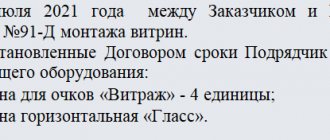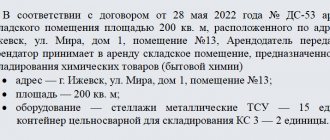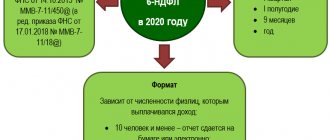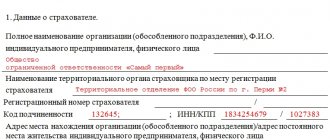Procedure
Registration of conservation is regulated additionally for budgetary and state enterprises.
This procedure is less strict for commercial firms.
The process consists of the following steps:
- Stage 1. Decision making
The decision is made by an authorized employee of the organization. If management has the right to make such decisions, the document is replaced by an order to transfer the OS to conservation.
- Stage 2. Drawing up an order
After making a decision, the head of the enterprise issues an order.
The order specifies:
- list of conserved objects;
- causes;
- deadlines;
- OS translation activities;
- a commission is created - persons responsible for the conservation and then re-preservation of the OS;
- responsible for the storage and condition of objects.
Persons responsible for carrying out the procedure must familiarize themselves with the order.
The list of activities makes it possible to justify the economic feasibility of costs. This is considered one of the criteria for accepting expenses when calculating income tax. The deadline will help stop accrual of depreciation on fixed assets.
- Stage 3. Carrying out an inventory of conserved objects
One of the main activities carried out before canning OS is inventory. This procedure allows you to check the presence, condition and completeness of the property.
- Stage 4. Conservation of assets and drawing up an act
After preliminary work, an act of transferring the OS for storage is drawn up. The act is signed by the commission and the head of the enterprise.
- Stage 5. Reflections in accounting
After completing all the necessary documents, the transfer of the object is displayed in accounting.
Fixed assets in storage are accounted for in a special subaccount. A special mark is placed on the inventory card.
- Stage 6. Storage and maintenance of mothballed fixed assets
Specially appointed persons are responsible for the safety of mothballed objects.
Current costs form the expenses of the enterprise. Amounts are recorded in current periods.
- Stage 7. Extension of preservation
To extend the conservation period of objects, a separate order is issued.
Preservation period
By law, the minimum period for equipment preservation is three months, and the maximum is three years. Calculation begins from the date of approval of the document. If there is a need to extend the period, then the proposal for extension must be put forward no later than a month before the expiration of the conservation period. As for the re-preservation of equipment, the proposal is made no earlier than five months after re-preservation (resumption of operation of previously mothballed equipment).
Other publications: Second citizenship notification to the FMS
Documenting
Correct documentation is the main condition for recognizing costs when calculating corporate income tax.
Two main documents for formalizing the conservation of OS: an order and an act.
Sample order
The order to transfer OS for storage is signed by the management of the enterprise.
The document states:
- reasons for transfer;
- term of transfer for preservation;
- staff responsible for conservation.
After all measures have been taken, a certificate of transfer of objects for storage is drawn up.
order for conservation of fixed assets – word.
How to draw up a deed?
An act for recording is drawn up after conservation has been completed. The document is not necessary and is carried out at the request of management.
The act is signed by the commission members and the director. It contains the following data:
- a complete list of conserved objects;
- exact start date of the procedure;
- measures taken to transfer fixed assets to conservation;
- expenses.
After signing by the management of the enterprise, the act becomes the main document for:
- accounting for canning costs in expenses;
- suspension of depreciation for objects that are in storage for more than three months.
There is no specific established form for drawing up an act and an order. They are performed in any form.
act on conservation of OS - word.
Depreciation on mothballed fixed assets
The gradual decrease in the value of a company's fixed assets, associated with wear and tear, through the monthly inclusion of part of its cost in the cost of production, is called depreciation.
After conservation, fixed assets continue to be included in the fixed assets of the enterprise. If the period exceeds 3 months, the object is removed from the list of depreciable objects.
Depreciation stops accruing on the first day of the month. Accrual is suspended one month after the order is published.
One of the main goals of conservation is to temporarily stop the calculation of depreciation.
In accounting, the length of time during which fixed assets are stored does not affect the time of its useful use.
According to accounting law, depreciation can be calculated even after the end of its useful life.
Consequently, after reactivation, accrual can continue in the same amount until the cost is fully paid off.
Reasons for equipment conservation
Equipment conservation is carried out due to the following circumstances:
- man-made accidents, natural and man-made disasters that caused the cessation of equipment operation;
- non-use of equipment for more than three months in a row;
- inability to repurpose equipment due to its specific features;
- equipment cannot be rented out;
- equipment used seasonally in commercial and non-commercial activities.
Accounting and postings
After the management signs the order and approves the act, the OS is transferred to canning.
After conservation of fixed assets, they remain listed in accounting as part of fixed assets in account 01.
Fixed assets that are in storage are accounted for in one account, along with exploited fixed assets.
To ensure correct accounting, in the enterprise’s chart of accounts it is necessary to provide for the “Fixed Assets” account, a subaccount “Fixed Assets for Conservation”.
When transferring equipment, entries are made to transfer their value from the main sub-account, where fixed assets are accounted, to the sub-account for accounting for mothballed objects - D 01 “OS for conservation” K 01.
During depreservation, reverse wiring is performed.
Sample act on transfer to conservation
LLC “General Director Petrov —— (Petrov S.A.) November 01, 2011 ——————- Act No. 6 on the transfer of fixed assets to conservation We, the undersigned, are a commission consisting of: Chief Engineer A.R. . Ivanov Chairman ————————————————————— Shop manager V.K. Volkov, worker A.M. Medvedev, and members of the commission ———————————————————— accountant V.N. Zaitsev —————————————————————————— drew up this act that: November 1, 2011 <1> the excavator was mothballed, model ——— —————————————————————— “Excavator-planner UDS 214 on TATRA T815-2 6×6.2 chassis” ———————————— —————————————
| Name | Inventory number | Accounting type | Initial cost, rub. | Amount of depreciation, rub. | Residual value, rub. | Commissioning period |
| Excavator-leveler UDS 214 on TATRA T815-2 6×6.2 chassis | 110 | Accounting | 310 000 | 160 000 | 150 000 <2> | 20.03.2012 |
| Tax | 310 000 | 160 000 | 150 000 |
Reasons for the conservation of the facility: lack of orders for excavation work ————————————————————————— Before conservation, the following preparatory work was carried out in accordance with the conclusion of the commission dated October 20, 2011 < 3>: 1. The surfaces of the equipment are cleaned of dirt. ————————————————————————— 2. The moving parts of the excavator have been lubricated. ————————————————————————— Materials used during the preparatory work: — rags — 1 kg; —————————————————————————— — litol 8 — kg. —————————————————————————— 3000 (three thousand) rubles. <4>. Total costs of conservation ————————— Conservation of the above property and equipment was carried out for a period until March 20, 2012 —————- Chairman of the commission <5> Ivanov A.R. Ivanov Members of the commission: Volkov V.K. Volkov Medvedev A.I. Medvedev Zaitsev V.N. Zaitsev<1> The act must clearly indicate the beginning of conservation. <2> For a conservation period of more than three months, the residual value of the object is recorded in the act.
<3> A reference to the commission’s conclusion will justify the preparatory work. <4> It is advisable to record in the act the amount of conservation expenses already incurred. <5> The commission should include technical specialists.
Figure The list of objects transferred for conservation is determined during the inventory
Typically, a company mothballs a group of objects that are involved in a particular activity (for example, a production line), rather than individual fixed assets. To determine a specific list of temporarily unused assets, an inventory is carried out.
The order to conduct an inventory must contain a direct indication of which groups of objects are being inventoried, and also that the inventory is being carried out to transfer the objects for conservation.
If, when transferring objects to mothballing, the company knows the time frame when fixed assets will not be used, it is possible to set in the accounting policy a period for auditing all property at the time of transferring the objects to the mothballed category.
Objects intended for conservation are allocated to a separate group during the inventory. To account for it, the company can use a separate subaccount “Objects transferred for conservation” of account 01. In the act, such objects are listed indicating the brand or model, as well as the inventory number.
Tax accounting
The company pays both transport tax and property tax on mothballed property.
If the company is on the general taxation system, the amount of contributions is reduced by this amount.
There is no need to reinstate value added tax.
But, in some cases there is such a need:
- The company switches to another method of taxation.
- Fixed assets in storage are transferred to the authorized capital of another enterprise.
- The property, after reactivation, will be used in work that will not be subject to value added tax.
In all of the above cases, it is necessary to have primary documentation and then restore the value added tax.
Error correction
If an accounting specialist notices an error in the act, he has the right to correct it. For example, if the amount was entered incorrectly in the document, it can be edited by crossing it out and indicating the correct value. However, do not forget that corrections in the document must be certified correctly. For this it is enough:
- put in the act the date when the correction was made;
- write “Corrected Believe”;
- sign the employee who is responsible for the correction;
- decipher this signature.
When filling out a document, it is unacceptable to use line corrections, blots, corrections and erasures.
So, today many firms, companies, enterprises are forced to suspend their work for various reasons and introduce conservation of equipment that is little used or not used at all. Firstly, this procedure allows you to ensure the best safety of the equipment, and secondly, the company will greatly save money associated with the transfer of tax fees. A properly drafted conservation act can help those firms, companies, and enterprises that do not plan to complete the current financial year with a profit.
Conservation of an unfinished construction site
After making a decision on conservation, the developer (customer) ensures the preparation of technical documentation.
We recommend reading: Business loans from scratch Sberbank
Moreover, he independently determines its volume and content.1.5. Based on this decision, the developer (customer), together with the contractor, carries out an inventory of the work performed on the construction (reconstruction) of the facility in order to record the actual condition of the facility, the availability of design documentation, structures, materials and equipment.1.6.
Within ten calendar days after the decision is made, the developer (customer) is obliged to notify the contractor and the body that issued the construction (reconstruction) permit about the conservation of the facility, as well as the state construction supervision body, if the construction (reconstruction) of the facility is subject to such supervision.1.7. If conservation is not carried out, the developer may be held administratively liable on the basis of Part 1.1.8.
Objects
Sequence of operations
The preservation procedure occurs in a certain sequence . First of all, a decision is made to carry out this procedure by the body of the enterprise that has all the necessary powers for this.
After a decision is made, an order is issued that it is necessary to create a commission that deals with conservation issues. The head of this commission should be the head of the enterprise. After the order is issued, it is necessary to create a report stating that the use of fixed assets is impossible. The creation of a report must be approached from a technical and economic perspective.
Other publications: When registration at a temporary place of residence is necessary
At the end, an act , which indicates that fixed assets are temporarily removed from the circulation and it is advisable to mothball them. The creation of a commission and the preparation of all documents are optional procedures . In this case, it will be sufficient to provide a decision on conservation.
If an enterprise has decided to sell or transfer objects that have been mothballed, then in this case it is not necessary to re-mothball them. That is, they can be sold or transferred in the form in which they are located.
Order (instruction) on conservation of fixed assets
1.2.
___________________________________________________ (name), _________________________________ (series, type of construction or model, brand), Location: __________________________________________________________, Manufacturing organization _________________________________________________, Cost: __________________________________________________________ rubles, Costs of maintaining the mothballed OS: ______________ rubles per month, Preservation period: _________________________________________________ months.
2. _____________________________________________ make the appropriate (position, surname, initials) changes to the accounting registers and reporting. 3. Approve the cost estimate for the maintenance of mothballed fixed assets in the amount of __________ rubles per year. 4. I entrust control over the execution of this order to _________________________________________________________________________.
Scope of conservation work
In this regard, in particular, the following work is being carried out:
- manufacturing (creation) of structures that accept design loads (including temporary ones);
- installation of equipment that additionally secures unstable structures and elements, or dismantling of such structures and elements;
- freeing containers and pipelines from hazardous and flammable liquids, closing or welding hatches and large openings;
- bringing process equipment into a safe condition;
- disconnection of utilities, including temporary ones (except for those necessary to ensure the safety of the facility);
- taking the necessary measures to prevent unauthorized access to the interior of the facility and the construction site.
This is stated in paragraph 9 of the Rules, approved by Decree of the Government of the Russian Federation of September 30, 2011 No. 802.
What mistakes can be made when drawing up an act?
Based on the practice of lawyers on the Legal Ambulance website, we can conclude that the most common mistakes when drawing up an act are:
- using different colors of ink;
- entering information with a simple pencil;
- the difference in the amount written in numbers and in words;
- presence of spelling errors;
- lack of date for drawing up the act;
- incorrect company name;
- signing a document by an employee of the organization who does not have the necessary authority;
- mechanical damage to the paper, which can cause accelerated wear of the document.
This should include, perhaps, the different quality of different sheets of the act.
Of course, it is possible that the equipment preservation certificate will be valid even if the above errors are present. However, their presence may cause an in-depth inspection of the “freezing” process by employees of regulatory authorities.
Important!
In addition, if tax officials consider the existing errors to be significant, they may refuse to reduce taxes!
Features of the event
Conservation is a mandatory procedure for those enterprises that have a strategic purpose, influence the economic situation of the state, and are also responsible for its safety. This operation is also carried out in institutions that are the property of the state.
It is worth noting that in this case there is no need to clarify the share of state ownership in the capital of the enterprise. The procedure for performing conservation is specified in the provisions . They must be taken into account when carrying out this operation, especially if state funds are involved. And also if the procedure is carried out at the expense of other sources. Thus, it does not matter what form of ownership the enterprise has.
In this matter, only the source of financing is important . It is necessary to focus on how conservation issues are resolved and what this procedure is all about.
The exact definition of what conservation is is indicated in one of the provisions. In your own words, this concept can be stated as follows : conservation of OS objects is a whole complex of measures that are aimed at storing OS for a long period with the possibility of resuming functioning if production activities are stopped.
That is, in the case when fixed assets are temporarily impossible to use, they can be mothballed. Preservation is possible for up to three years . When the conservation period ends, it is necessary to carry out the reverse procedure - re -preservation , and also decide how to continue to use the fixed assets or completely liquidate them. Enterprises that are not affected by the provisions can mothball the OS for a longer period.
This decision must be formalized as an order from the manager; it is adopted at the general meeting of shareholders. It all depends on the rules to which the entire enterprise is subject. Before performing this procedure, it is necessary to draw up a project. Such a project may be based on recommendations made by a special commission.






